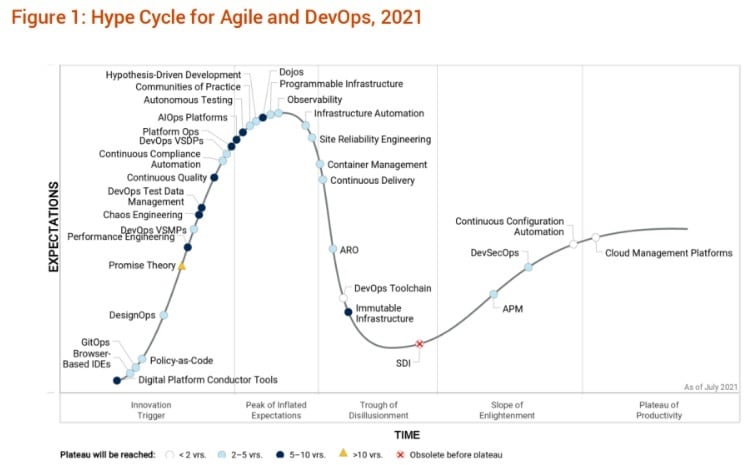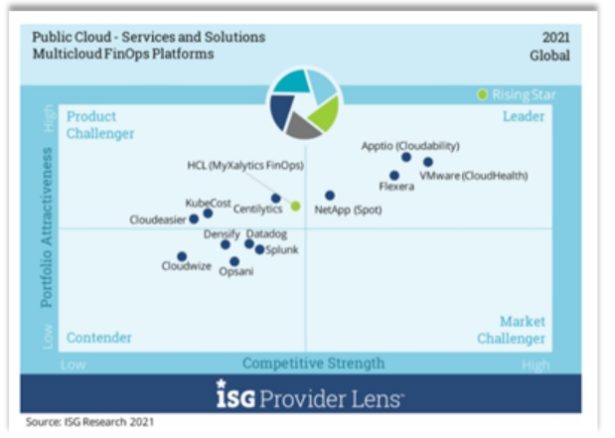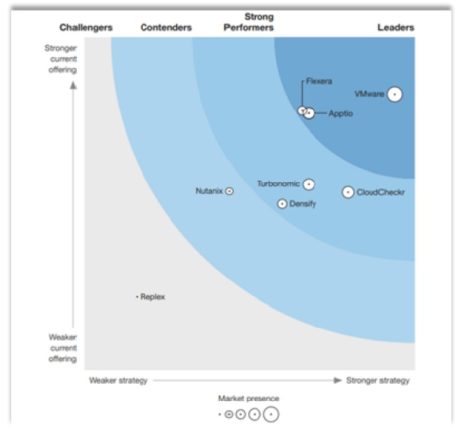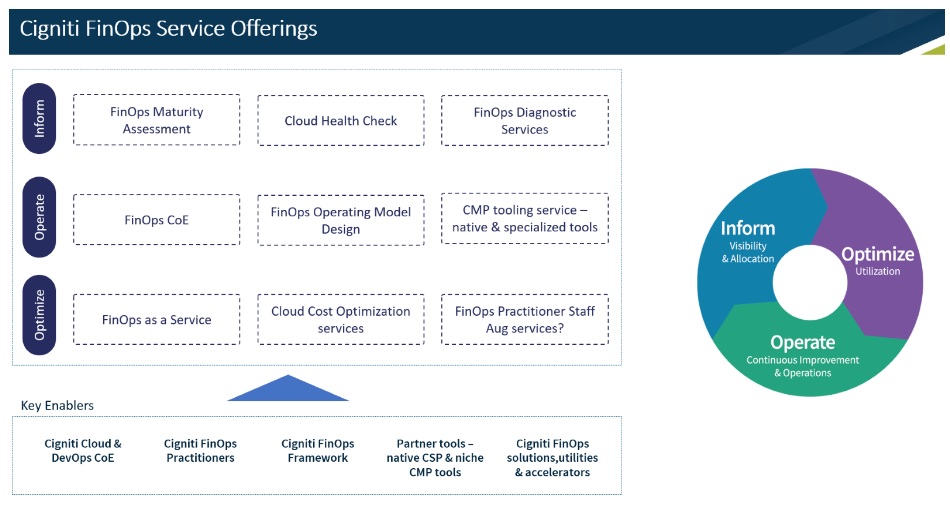Everything You Need to Know About FinOps
FinOps is a solution for controlling operational costs in a cloud environment and offers ways for teams to manage their cloud costs, wherein everyone takes ownership of their cloud usage.
FinOps term is coined by combining Finance + DevOps. It’s an evolving cloud financial management discipline and cultural practice.
In practice, FinOps means establishing performance indicators on an organization’s cloud costs based on service, business unit, environment, etc. and diagnosing the organization’s consumption based on these indicators.
FinOps is also referred to by the following names: Cloud Financial Management; Cloud Financial Engineering; Cloud Cost Management; Cloud Optimization; and Cloud Financial Optimization.
Key Market Drivers for FinOps
- Reduce wasted cloud spend – As per the latest 2022 analyst and vendor reports, 32% of total cloud spend is wasted spend i.e., out of every 100 USD spent in cloud, 32 USD is wasted spend.
- Cost management across multiple clouds – 90% of organizations across Geos are using multiple clouds. Traditional cost management tools provided by CSPs/Hyperscale’s like AWS, Azure, and GCP support only their respective cloud and don’t support cloud cost management across multiple clouds.
- Strong demand from end customers to optimize cloud spend – There is an increasing demand for timely reports on cloud spend + accountability on the cloud spend with allied business value obtained. Organizations are looking for FinOps/ Cloud Management Platforms (CMP) that can be leveraged to optimize cloud spend across all cloud environments.
- Operating model changes arising from increased cloud spend – IT and Finance teams need to operate more efficiently together to support the agility of the business and pro-actively monitor and react to spend. This will also enable teams to take advantage of the variable cost model of the cloud.
Key Benefits that Client Organizations Get by Following FinOps Practices
The following are the key outcomes that an organization would get by following FinOps best practices:
- Gain visibility to control cloud costs by understanding cloud usage
- Drive accountability for cloud spend. Assists cross-functional teams in maintaining financial accountability for the cloud services they utilize
- Simplifying cloud budget management
- Identify cost optimization opportunities and automate tasks
- Accelerate fulfillment requests
- Enable data-driven decision making
- Organizational alignment on cloud spending
FinOps is a cross-functional practice, and the following are the typical personas associated with Cloud Financial Management: FinOps Practitioner /CoE team; IT Operations/ Engineering team; Business/Product Owner; Finance; and Procurement.
KPI Categories Tracked as Part of FinOps
FinOps relies heavily on key performance indicators (KPIs). KPIs are used to gain visibility and a metric perspective to streamline the cost-controlling process. FinOps KPIs can be broadly categorized as follows:
- Cloud Visibility KPIs – includes metrics related to cost, consumption, performance, configuration, security, and availability across cloud environments
- Cloud Optimization KPIs – includes metrics related to cost savings, production incidents, mean time to repair, security lapses, etc.
- Cloud Governance and Automation KPIs – includes metrics related to financial management governance, operational governance, security, and operational governance
Key Metrics Tracked as Part of Various FinOps KPI Categories
KPIs establish measurable benchmarks and metrics to support the monitoring of cloud resources and their consumption. The following are the key metrics tracked:
| FinOps KPI category | KPIs /Metrics |
| Cloud Visibility KPIs |
|
| Cloud Optimization KPIs |
|
| Cloud Governance and Automation KPI |
|
The FinOps Foundation has defined a “Crawl, Walk, Run” maturity approach with respect to FinOps. This approach enables enterprises to start small and grow in scale, scope, and complexity.
In assessing the state of a client’s FinOps capability or domain, we can use these maturity designations to identify where the enterprise is currently operating and identify areas for moving from a Crawl to a Walk, or from a Walk to a Run maturity.
| FinOps Maturity Level | Maturity Level characteristics | Indicative Goals/KPIs |
| Crawl |
|
|
| Walk |
|
|
| Run |
|
|
Common Challenges faced by FinOps Team
As per the recent survey done by the FinOps Foundation, the following are the top 5 common challenges faced by FinOps teams across organizations:
- Getting engineers to act on recommendations made by FinOps team
- Accurate forecasting of cloud spends
- Dealing with shared costs
- Reducing waste or unused resources
- Full allocation of costs
Tools Leveraged for Cloud Cost and Usage Optimization
Cost Management tools provided by Cloud Service Providers (CSPs) like AWS, Azure, and GCP are typically leveraged by organizations that are leveraging services from a single cloud provider. These are popularly known as native cost management tools, and their support is limited to the specific cloud platform. Ex: AWS Cost Explorer supports only AWS and doesn’t support Azure, GCP, Oracle Cloud, IBM Cloud, etc.
Enterprises using multi-cloud leverage third party tools – popularly known as Cloud Management Platforms (CMPs) or FinOps tools, which offer many advanced features and functionalities compared to native cost management tools. Ex: Apptio can be leveraged to support multi-cloud environments using AWS, Azure, and GCP.
| Cloud Service Provider (CSP) | Native Cloud Cost & Usage Optimization Tools |
| AWS |
|
| Azure |
|
| GCP |
|
Analyst’s View on Cloud Management Platform
Cloud Management Platforms (CMP) are bucketed in the Plateau of Productivity category in the latest Gartner report on the Hype Cycle for Agile and DevOps published in July/August 2021.
This implies that the real-world benefits of the Cloud Management Platform have been successfully demonstrated and accepted.
The report further adds that a rapid growth phase has begun for CMPs that are stable and tools are set to enter a second or third generation of innovation.
The above statement on rapid growth is testified by the recent acquisitions made by leading product vendors to strengthen their FinOps offerings.
- 2018 – VMware acquires CloudHealth
- 2019 – Apptio acquires Cloudability
- 2020 – NetApp acquires Spot
- 2021 – NetApp acquires CloudCheckr
As FinOps is a rapidly growing market with very high adoption across Verticals and Geos, all leading analysts including Forrester, Gartner and ISG periodically publish reports on FinOps tools and market. Following are the recently published analyst reports published:
ISG – Multicloud FinOps Cloud Management Platform (CMP) report published in 2021
Forrester – Cloud Cost Management and Optimization published in 2020
Top 3 Pros and Cons of 3rd Party FinOps Tool vis-a-vis Native Tools from CSPs
| Native cost management tools from CSPs Ex: AWS Cost Explorer | 3rd party independent FinOps tools Ex: Apptio Cloudability, Centilytics, etc. | |
| Pros |
|
|
| Cons |
|
|
IT Infra team handling client’s cloud environment typically handles day to day FinOps activities in client environment.
Based on availability, native cost management tools or 3rd party independent FinOps tools are leveraged by this IT Infra team handling FinOps activities.
Periodic FinOps related reports and dashboards are shared by IT Infra team with several stakeholders including Finance, Procurement, cloud consumption team spanning development and testing.
Infrastructure services division/BU typically owns FinOps services in Tier 1 and Tier 2 SI’s.
If the SI doesn’t have dedicated Infrastructure division, FinOps services is handled by multiple BU’s including Application Development and Engineering team.
Conclusion
FinOps assessment can be done by Cigniti FinOps practitioners jointly with our partners. This assessment will be focused on determining the current FinOps maturity level (as per maturity designations defined by FinOps Foundation) and arrive at recommendations and best practices that will enable the client organization to move to Run level in a phased manner.
Following are the popular 3rd party tools that are widely adopted across Geos. Cigniti has connect with all leading tool vendors.
- Apptio Cloudability
- Centilytics
- CloudBolt
- Corestack
- NetApp CloudCheckr + Spot
- VMware CloudHealth
Based on the customer requirement, Cigniti would be teaming up with the right partner to render the allied FinOps service successfully to our end customer.
Cigniti has several FinOps accelerators including FinOps maturity assessment calculator, Cigniti FinOps platform, etc that can be leveraged during both pre-sales and delivery cycle.
Cigniti has established connect with all leading CSPs and 3rd party independent vendors.
CSP Partnership status (native cost management tools) – Cigniti has partnership with AWS, Microsoft and Oracle Cloud. We are in the process of signing partnership with GCP
Partnership with 3rd party independent FinOps tools – Cigniti has established partnership and established good connect with all market leading Cloud Management Platforms/FinOps tool vendors including Appttio, Centilytics, CloudBolt, Corestack, Hystax and NetApp.









Leave a Reply